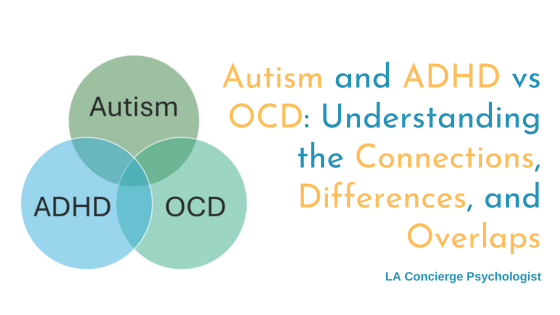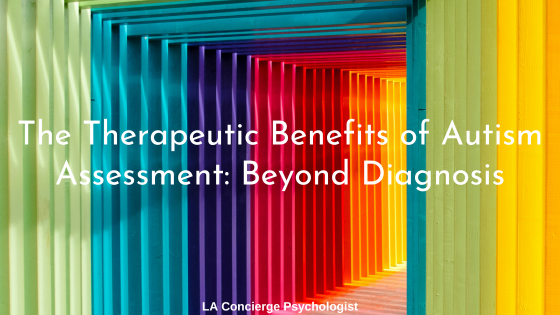Comparing autism vs. borderline personality disorder (BPD) reveals significant symptom overlap. For example, people with either sometimes experience acute interpersonal difficulties and struggle with black and white thinking.
These similarities can, unfortunately, lead to misdiagnosis. This is especially common in autistic women, whose autistic traits are notoriously difficult to spot. Our understanding of this subject continues to evolve, but most psychologists agree there is significant overlap between the characteristics of autism and BPD.
Areas where BPD and autism overlap
One of the most notable areas of overlap is reportedly “theory of mind”—a person’s ability to explain and predict other people’s behavior. Both autistic people and those with BPD sometimes have difficulty interpreting others’ motivations, leading to misunderstandings.
In their 2021 analysis of existing literature on the subject, Vegni, D’Ardia, and Torregiani conclude (despite their call for further research using shared protocols) that, “The lack of empathy and theory of mind is an overlapping aspect in BPD and ASD [autism spectrum disorder].”[i] Though, it should be noted that, more recently, researchers do not believe that autistic adults struggle with theory of mind. It’s more so an issue stemming from the double empathy problem.
Black-and-white thinking is also prevalent in both conditions, particularly regarding relationships. For example, an autistic person who gets into a disagreement with a friend might give no thought to the possibility of reconciliation, assuming that the friendship is now over. Similarly, an individual with BPD might find it difficult to recognize good and bad traits in the same person at the same time. Instead, they tend to idolize or hate the person, depending on the most recent interactions.
Another overlap between BPD and autism is an insistence on order and structure. Previously, this was viewed as a differentially autistic trait compared to borderline personality disorder. However, there is some recent research that contradicts this. A 2011 study involving more than 600 people with autism and/or BPD revealed “high levels of systematization in patients with BPD as well as in patients with ASD [autism spectrum disorder].”[ii]
While researchers are still trying to pin down the precise areas where BPD and autism overlap, it seems clear that many traits are indeed shared, especially among females. In one study, nearly half of women diagnosed with BPD also met diagnostic criteria for autism when assessed using the Autism Spectrum Quotient. According to the study’s authors, “This finding would need to be replicated in a larger sample, but is in line with the idea that some females with BPD have undiagnosed ASC [autism spectrum condition].”2
Areas of difference between BPD and autism
Before we suggest possible ways to distinguish these conditions, we want to emphasize that there is very little empirical guidance for differential diagnosis of autism and personality disorders.[iii] It’s also important to remember that no two persons are exactly alike, even though they may share the same diagnosis. Many people with BPD will have some traits typically associated with autism and vice versa.
Traits more commonly seen in autism
- Sensory issues: oversensitivity (or under-sensitivity) to sound, sight, taste, smell, or touch
- Stimming: use of sensory stimuli (including body movement) to regulate ones self, such as repetitively listening to the same song, surrounding ones self with a particular smell, or fidgeting
- Honesty: truthful to a fault, even in situations where discretion is encouraged/expected
- Special interests: deep knowledge about and excitement for a particular hobby/subject
- Neurodivergent body language: difficulty maintaining eye contact, more or fewer facial expressions
- Literal interpretation: difficulty understanding implication, sarcasm, precision with language use
- Short social battery: preferring alone time or feeling overwhelmed/drained by social interaction
Traits more commonly seen in borderline personality disorder
- Childhood trauma: history of significant abuse or neglect
- Emotional lability: Fine one moment and then deeply depressed or angry the next
- Heightened sensitivity: heightened sensitivity to perceived slights or threats
- Personality instability: frequent changes in values, hobbies, opinions, relationships, etc.
- Chronic suicidality: frequent bouts of severe depression, self-harm, and/or threats of suicidality
- Persistent feelings of emptiness: attempts to “fill the hole” with substances, casual sex, etc.
Potential ways of distinguishing autism vs. BPD
Autistic people and those with BPD may exhibit some of the same traits but for different reasons. To come to the correct diagnosis, you must be thorough. If you’re a patient or practitioner trying to differentiate BPD vs. autism, we recommend you do the following:
Question the “why” behind behaviors
Autism and BPD sometimes overlap in terms of observable behaviors. Exploring the motivation behind these behaviors can help illuminate the differences between BPD and autism.
For example, both conditions are associated with the ability to become “social chameleons,” but this looks slightly different in autism vs. BPD. Those with BPD, who typically have a poor sense of identity, lack the enduring personal interests and values that would otherwise guide their words and actions. They often “try on” different personas to see what feels good to them. Autistic people, on the other hand, typically have well-established identities but don’t always know how to express themselves in ways that neurotypical people accept. So, they copy behaviors they’ve seen in the past to avoid social faux pas.
Here’s another example that illustrates why it’s essential to question the “why” behind behaviors: Consider the hypothetical case of a woman struggling with alcoholism. If she is autistic, she likely uses alcohol to manage her social anxiety and blunt the impact of sensory overload.[iv] On the other hand, if she has BPD, her motivation may be to distract herself from persistent feelings of emptiness.
Consider personal history
Patient history is essential to differential diagnosis. For example, if someone has an inherent distrust of people, when did that develop? If they have a history of severe childhood neglect or abuse, it may point to post-traumatic stress disorder or BPD. If they were teased in middle school for their special interests or struggle to recognize duplicitous behavior, it might point to autism.
Become familiar with both conditions
Prior to diagnosis, it is essential to familiarize oneself with the cognitive styles of both autistic people and those with BPD.[v] This will help you communicate more effectively during the diagnostic process, whether you’re a clinician or patient. For example, autistic people do better with precise, explicit language versus communication with implied meaning. This must be taken into account during diagnostic interviews to avoid misunderstandings.
Take gender differences into account
Autistic women experience many of the same difficulties that autistic men do, but they cope with autism-related challenges differently. For example, women are more likely to mask their symptoms and internalize their frustrations. As a result, autistic women may not appear to have the same degree of social difficulty that autistic men do (despite their inward struggles). Learn more about the unique signs of autism in women.
Be aware of potential biases
Autism is often associated with males, while BPD is seen more frequently in females. Clinicians presented with two patients with identical symptoms may therefore diagnose differently depending on patient gender due to confirmation bias. Gender biases can also lead to problems. For example, an autistic woman who talks obsessively about her special interest might be labeled a “chatty Cathy” or “social butterfly” instead of being recognized as autistic. Being aware of these potential biases can minimize their impact.
Find an expert
Distinguishing autism vs. BPD isn’t always straightforward. Whether you are seeking a diagnosis for yourself or a client, we recommend consulting with an autism specialist. Dr. Crystal I. Lee specializes in identifying autism in women. If you’re interested in working with Dr. Lee, send her a message to be placed on her waiting list.



